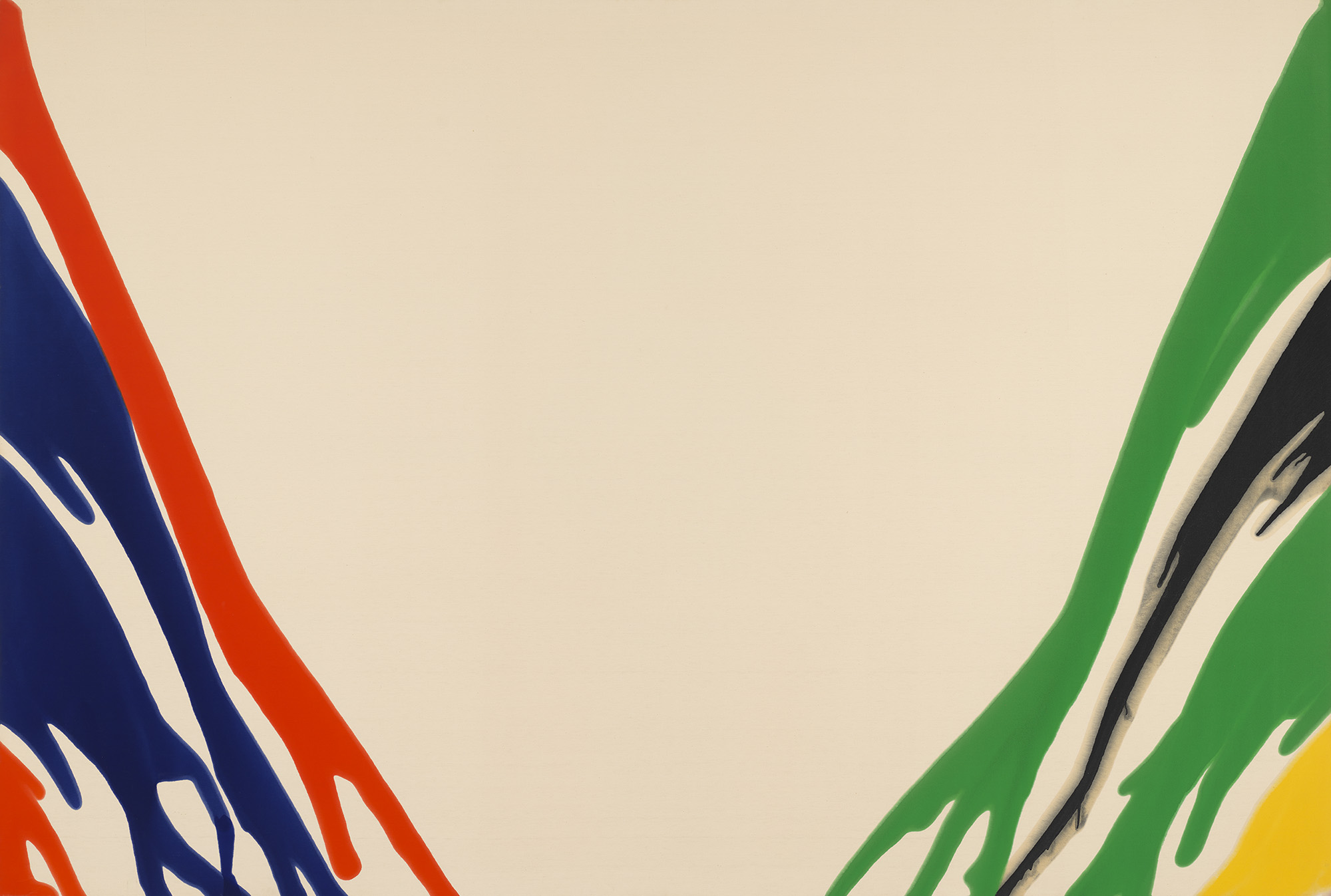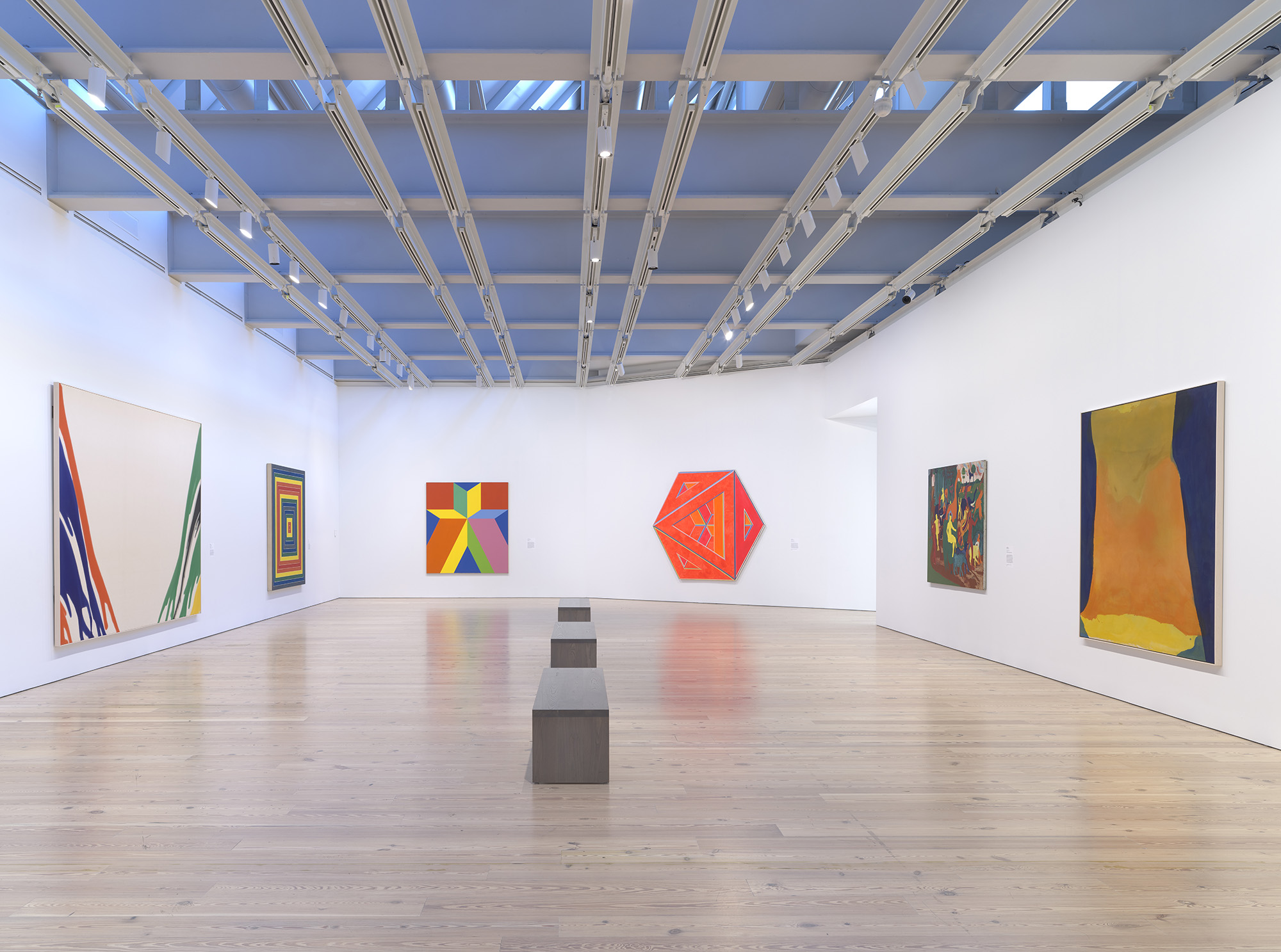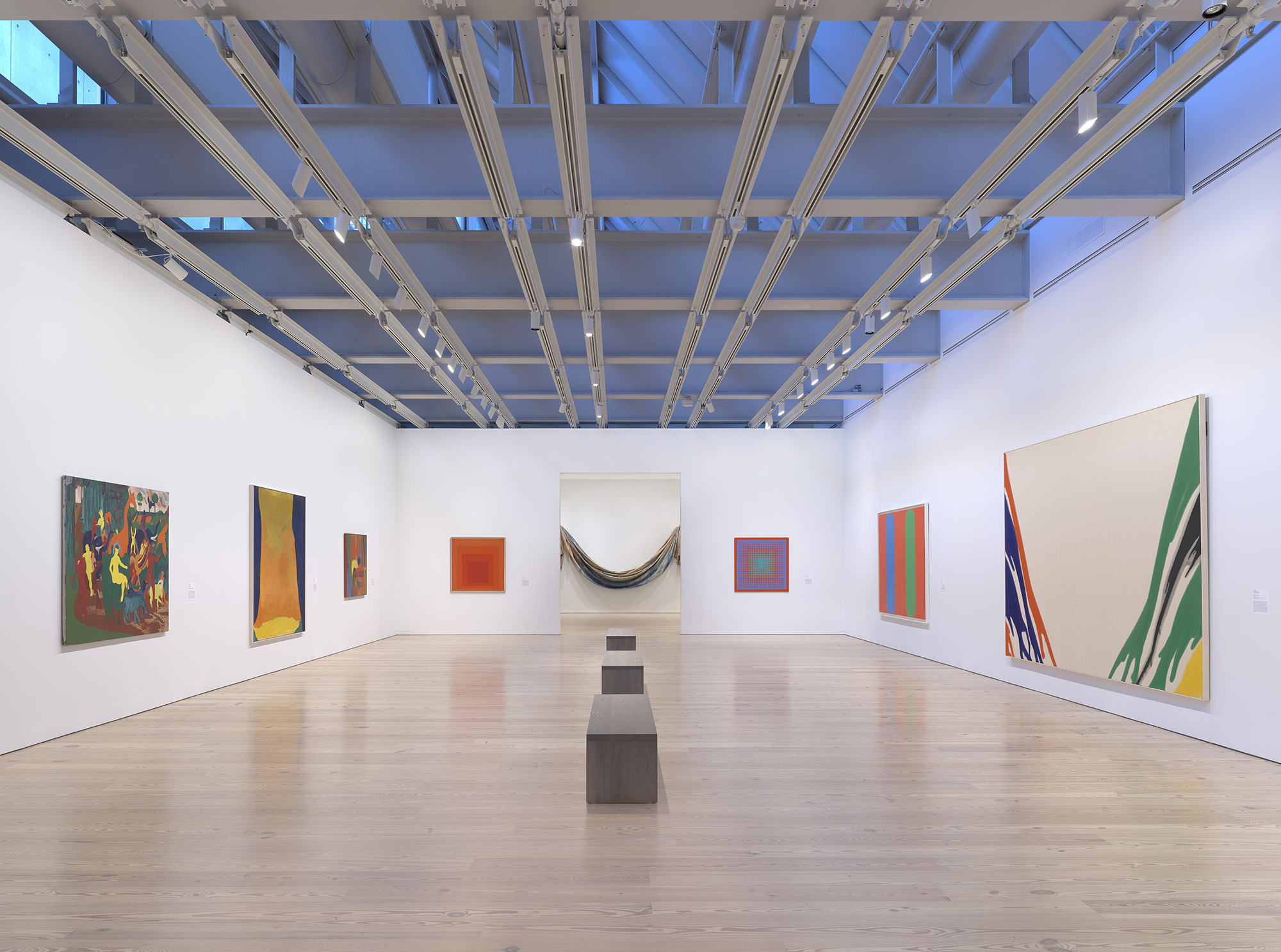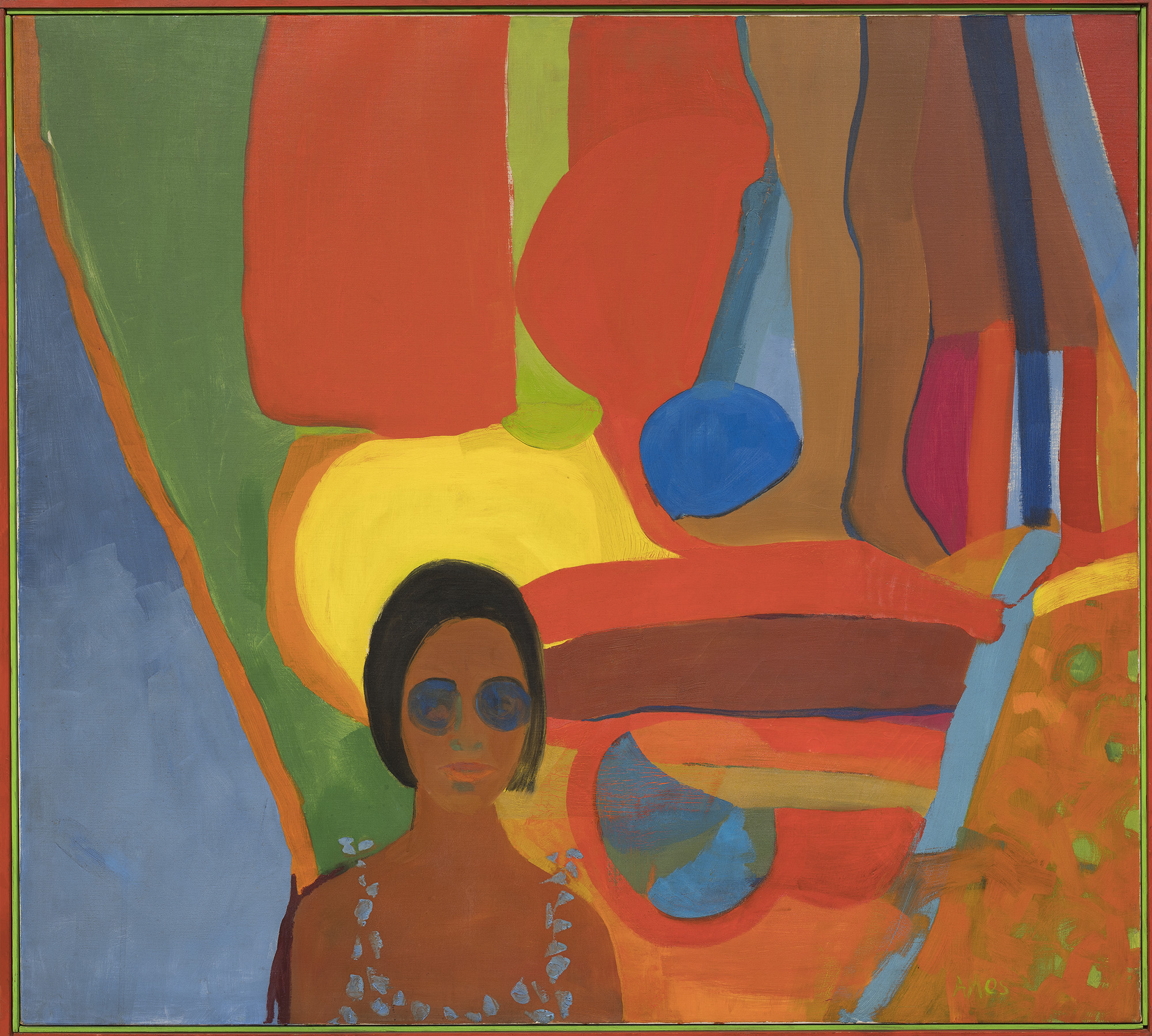Spilling Over: Painting Color in the 1960s gathers paintings from the 1960s and early 1970s that inventively use bold, saturated, and even hallucinatory color to activate perception. Many artists during this era adopted acrylic paint—a newly available, plastic-based medium—and explored its expansive technical possibilities and wider range of hues. Color Field painters poured paint and stained unprimed canvas, dramatizing materiality and visual force of painting. At the same historical moment, an emerging generation of artists of color and women explored color’s capacity to ignite new questions about perception, specifically its relation to race, gender, and the coding of space. Spilling Over looks to the divergent ways color can be equally a formal problem and a political statement.
Spilling Over: Painting Color in the 1960s is on view through August 18 at the Whitney Museum of American Art 99 Gansevoort Street New York, NY. photographs courtesy of the Whitney Museum of American Art









